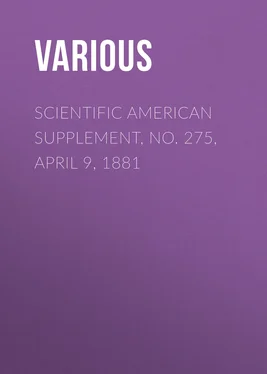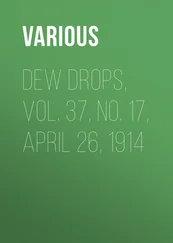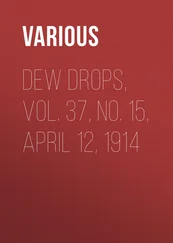Various - Scientific American Supplement, No. 275, April 9, 1881
Здесь есть возможность читать онлайн «Various - Scientific American Supplement, No. 275, April 9, 1881» — ознакомительный отрывок электронной книги совершенно бесплатно, а после прочтения отрывка купить полную версию. В некоторых случаях можно слушать аудио, скачать через торрент в формате fb2 и присутствует краткое содержание. Жанр: foreign_antique, periodic, foreign_edu, на английском языке. Описание произведения, (предисловие) а так же отзывы посетителей доступны на портале библиотеки ЛибКат.
- Название:Scientific American Supplement, No. 275, April 9, 1881
- Автор:
- Жанр:
- Год:неизвестен
- ISBN:нет данных
- Рейтинг книги:4 / 5. Голосов: 1
-
Избранное:Добавить в избранное
- Отзывы:
-
Ваша оценка:
- 80
- 1
- 2
- 3
- 4
- 5
Scientific American Supplement, No. 275, April 9, 1881: краткое содержание, описание и аннотация
Предлагаем к чтению аннотацию, описание, краткое содержание или предисловие (зависит от того, что написал сам автор книги «Scientific American Supplement, No. 275, April 9, 1881»). Если вы не нашли необходимую информацию о книге — напишите в комментариях, мы постараемся отыскать её.
Scientific American Supplement, No. 275, April 9, 1881 — читать онлайн ознакомительный отрывок
Ниже представлен текст книги, разбитый по страницам. Система сохранения места последней прочитанной страницы, позволяет с удобством читать онлайн бесплатно книгу «Scientific American Supplement, No. 275, April 9, 1881», без необходимости каждый раз заново искать на чём Вы остановились. Поставьте закладку, и сможете в любой момент перейти на страницу, на которой закончили чтение.
Интервал:
Закладка:
For breachy animals do not use barbed fences. To see the lacerations that these fences have produced upon the innocent animals should be sufficient testimony against them. Many use pokes and blinders on cattle and goats, but as a rule such things fail. The better way is to separate breachy animals from the lot, as others will imitate their habits sooner or later, and then, if not curable, sell them .
THE GUENON MILK-MIRROR
The name of the simple Bordeaux peasant is, and should be, permanently associated with his discovery that the milking qualities of cows were, to a considerable extent, indicated by certain external marks easily observed. We had long known that capacious udders and large milk veins, combined with good digestive capacity and a general preponderance of the alimentary over the locomotive system, were indications that rarely misled in regard to the ability of a cow to give much milk; but to judge of the amount of milk a cow would yield, and the length of time she would hold out in her flow, two or three years before she could be called a cow–this was Guenon's great accomplishment, and the one for which he was awarded a gold medal by the Agricultural Society of his native district. This was the first of many honors with which he was rewarded, and it is much to say that no committee of agriculturists who have ever investigated the merits of the system have ever spoken disparagingly of it. Those who most closely study it, especially following Guenon's original system, which has never been essentially improved upon, are most positive in regard to its truth, enthusiastic in regard to its value.
The fine, soft hair upon the hinder part of a cow's udder for the most part turns upward. This upward-growing hair extends in most cases all over that part of the udder visible between the hind legs, but is occasionally marked by spots or mere lines, usually slender ovals, in which the hair grows down. This tendency of the hair to grow upward is not confined to the udder proper; but extends out upon the thighs and upward to the tail. The edges of this space over which the hair turns up are usually distinctly marked, and, as a rule, the larger the area of this space, which is called the "mirror" or "escutcheon," the more milk the cow will give, and the longer she will continue in milk.

ESCUTCHEON OF THE JERSEY BULL-CALF, GRAND MIRROR, 4,904.
That portion of the escutcheon which covers the udder and extends out on the inside of each thigh, has been designated as the udder or mammary mirror; that which runs upward towards the setting on of the tail, the rising or placental mirror. The mammary mirror is of the greater value, yet the rising mirror is not to be disregarded. It is regarded of especial moment that the mirror, taken as a whole, be symmetrical, and especially that the mammary mirror be so; yet it often occurs that it is far otherwise, its outline being often very fantastical–exhibiting deep bays , so to speak, and islands of downward growing hair. There are also certain "ovals," never very large, yet distinct, which do not detract from the estimated value of an escutcheon; notably those occurring on the lobes of the udder just above the hind teats. These are supposed to be points of value, though for what reason it would be hard to tell, yet they do occur upon some of the very best milch cows, and those whose mirrors correspond most closely to their performances.
Mr. Guenon's discovery enables breeders to determine which of their calves are most promising, and in purchasing young stock it affords indications which rarely fail as to their comparative milk yield. These indications occasionally prove utterly fallacious, and Mr. Guenon gives rules for determining this class, which he calls "bastards," without waiting for them to fail in their milk. The signs are, however, rarely so distinct that one would be willing to sell a twenty-quart cow, whose yield confirmed the prediction of her mirror at first calving, because of the possibility of the going dry in two months, or so, as indicated by her bastardy marks.
It is an interesting fact that the mirrors of bulls (which are much like those of cows, but less extensive in every direction) are reflected in their daughters. This gives rise to the dangerous custom of breeding for mirrors, rather than for milk. What the results may be after a few years it is easy to see. The mirror, being valued for its own sake–that is, because it sells the heifers–will be likely to lose its practical significance and value as a milk mirror.
We have a striking photograph of a young Jersey bull, the property of Mr. John L. Hopkins, of Atlanta, Ga., and called "Grand Mirror." This we have caused to be engraved and the mirror is clearly shown. A larger mirror is rarely seen upon a bull. We hope in a future number to exhibit some cows' mirrors of different forms and degrees of excellence.– Rural New Yorker .
TWO GOOD LAWN TREES
The negundo, or ash-leaved maple, as it is called in the Eastern States, better known at the West as a box elder, is a tree that is not known as extensively as it deserves. It is a hard maple, that grows as rapidly as the soft maple; is hardy, possesses a beautiful foliage of black green leaves, and is symmetrical in shape. Through eastern Iowa I found it growing wild, and a favorite tree with the early settlers, who wanted something that gave shade and protection to their homes quickly on their prairie farms. Brought east, its growth is rapid, and it loses none of the characteristics it possessed in its western home. Those who have planted it are well pleased with it. It is a tree that transplants easily, and I know of no reason why it should not be more popular.
For ornamental lawn planting, I give pre-eminence to the cut-leaf weeping birch. Possessing all the good qualities of the white birch, it combines with them a beauty and delicate grace yielded by no other tree. It is an upright grower, with slender, drooping branches, adorned with leaves of deep rich green, each leaf being delicately cut, as with a knife, into semi-skeletons. It holds its foliage and color till quite late in the fall. The bark, with age, becomes white, resembling the white birch, and the beauty of the tree increases with its age. It is a free grower, and requires no trimming. Nature has given it a symmetry which art cannot improve.
H.T.J.
CUTTING SODS FOR LAWNS
I am a very good sod layer, and used to lay very large lawns–half to three-quarters of an acre. I cut the sods as follows: Take a board eight to nine inches wide, four, five, or six feet long, and cut downward all around the board, then turn the board over and cut again alongside the edge of the board, and so on as many sods as needed. Then cut the turf with a sharp spade, all the same lengths. Begin on one end, and roll together. Eight inches by five feet is about as much as a man can handle conveniently. It is very easy to load them on a wagon, cart, or barrow, and they can be quickly laid. After laying a good piece, sprinkle a little with a watering pot, if the sods are dry; then use the back of the spade to smooth them a little. If a very fine effect is wanted, throw a shovelful or two of good earth over each square yard, and smooth it with the back of a steel rake.
F.H.
[COUNTRY GENTLEMAN.]
HORTICULTURAL NOTES
The Western New York Society met at Rochester, January 26.
New Apples, Pears, Grapes, etc. --Wm. C Barry, secretary of the committee on native fruits, read a full report. Among the older varieties of the apple, he strongly recommended Button Beauty, which had proved so excellent in Massachusetts, and which had been equally successful at the Mount Hope Nurseries at Rochester; the fine growth of the tree and its great productiveness being strongly in its favor. The Wagener and Northern Spy are among the finer sorts. The Melon is one of the best among the older sorts; the fruit being quite tender will not bear long shipment, but it possesses great value for home use, and being a poor grower, it had been thrown aside by nurserymen and orchardists. It should be top-grafted on more vigorous sorts. The Jonathan is another fine sort of slender growth, which should be top-grafted.
Читать дальшеИнтервал:
Закладка:
Похожие книги на «Scientific American Supplement, No. 275, April 9, 1881»
Представляем Вашему вниманию похожие книги на «Scientific American Supplement, No. 275, April 9, 1881» списком для выбора. Мы отобрали схожую по названию и смыслу литературу в надежде предоставить читателям больше вариантов отыскать новые, интересные, ещё непрочитанные произведения.
Обсуждение, отзывы о книге «Scientific American Supplement, No. 275, April 9, 1881» и просто собственные мнения читателей. Оставьте ваши комментарии, напишите, что Вы думаете о произведении, его смысле или главных героях. Укажите что конкретно понравилось, а что нет, и почему Вы так считаете.












